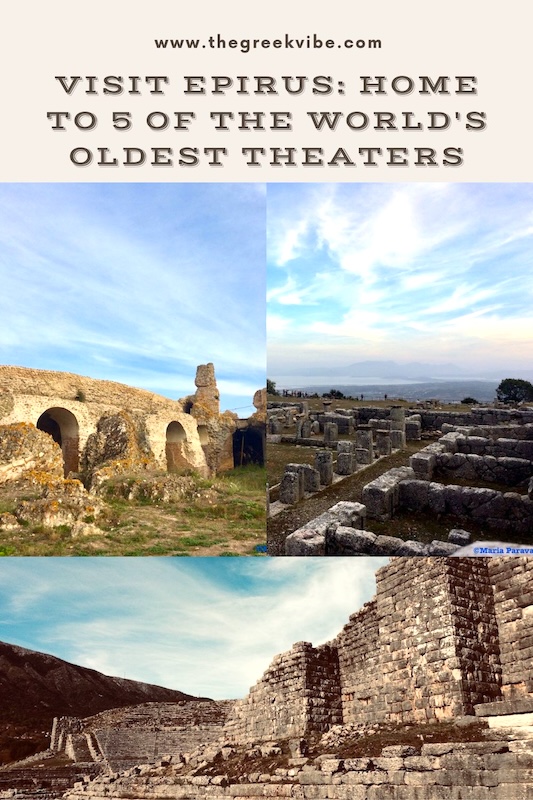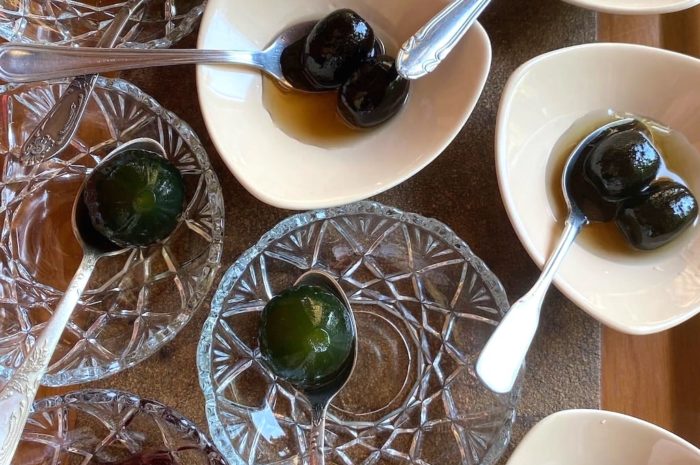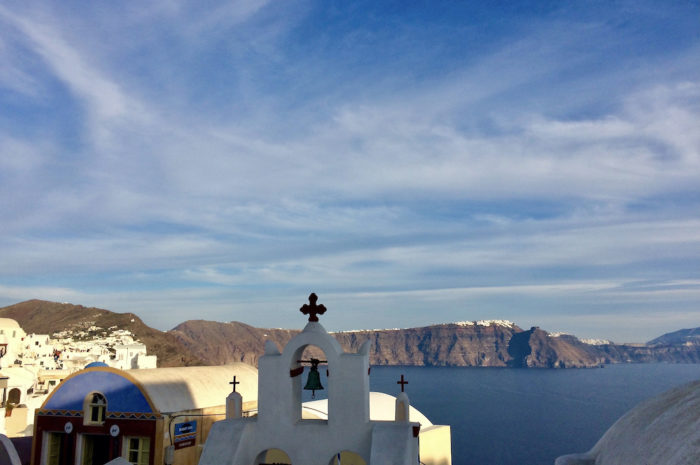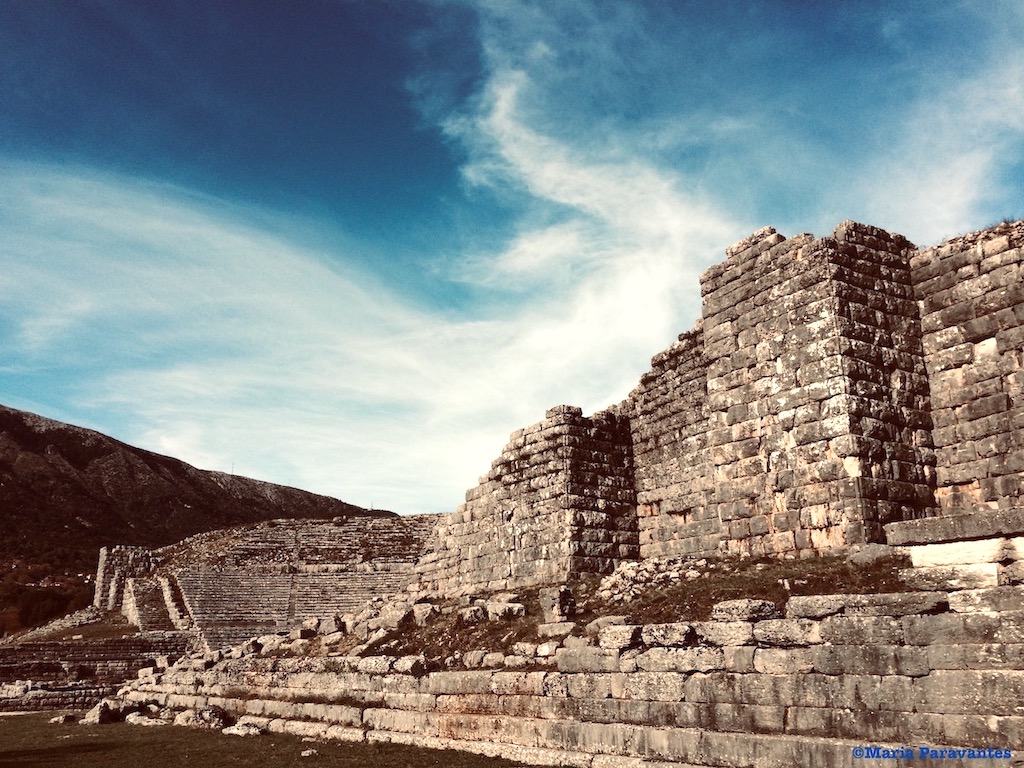
Ever since the ’60s and ’70s, Greece has been a favorite holiday getaway for travelers thanks to its undeniably beautiful beaches, sensational sunsets and exciting nightlife. And this can only get better. But as I often say through TheGreekVibe.com, there is so much more to Greece that’s worth discovering. One such place is Epirus. Located up north on the border with Albania, this region is bound to win you over with is natural beauty, its delectable food, its ancient theaters and its hospitable people.
If you’re thinking about visiting Greece, have already been to the islands or are more of an off-the-beaten-track type of traveler, then Epirus is for you. This is a land of tales and legends, music and silence, song and dance, dragons and towers.
Ladies and gentlemen, welcome to Epirus: nestled in the rugged Pindus mountains, ‘dipping’ into the Ionian Sea and caressed by the Ambrakikos Gulf. Which means that you can experience so many different sides of genuine Greece just by traveling to Epirus.
► Visiting Greece? The Top Things to Know
Epirus: Out of Seclusion and into the Light
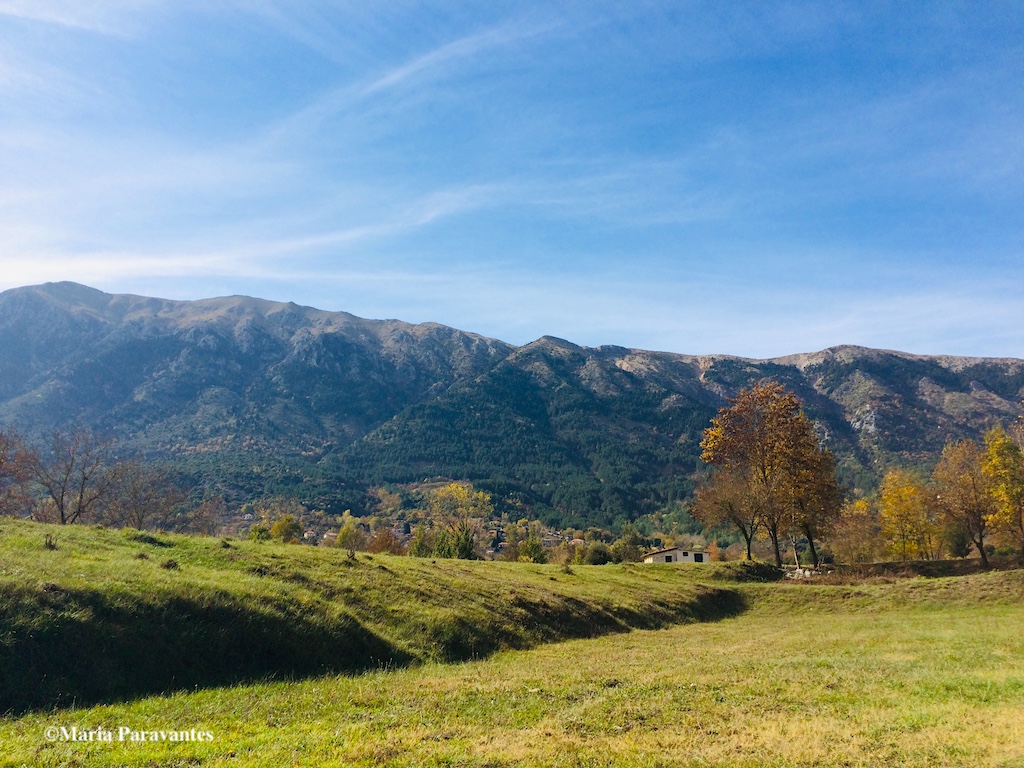
For decades, Epirus was one of the most secluded areas in Greece due to poverty, lack of roads and harsh weather. These ‘disadvantages’ however are exactly what ‘helped’ the villages preserve their local character and traditions offering visitors today real Greek experiences.
What is Epirus known for? Its polyphonic music – it is home to some of the country’s supreme instrumentalists mainly of the clarinet. Its natural wonders – springs, lakes, mountains, cliffs, beaches and wetlands – ideal for all kinds of sports. Its traditional villages. Its food and wine. Its ancient treasures and outstanding historical, religious and cultural monuments.
In short: Epirus is a dream come true for those restless souls who simply want it all.
👉🏼 Find the best hotel deals for you
►Eight Great Books for Greece Lovers
5 Ancient Greek Theaters Few People Know About
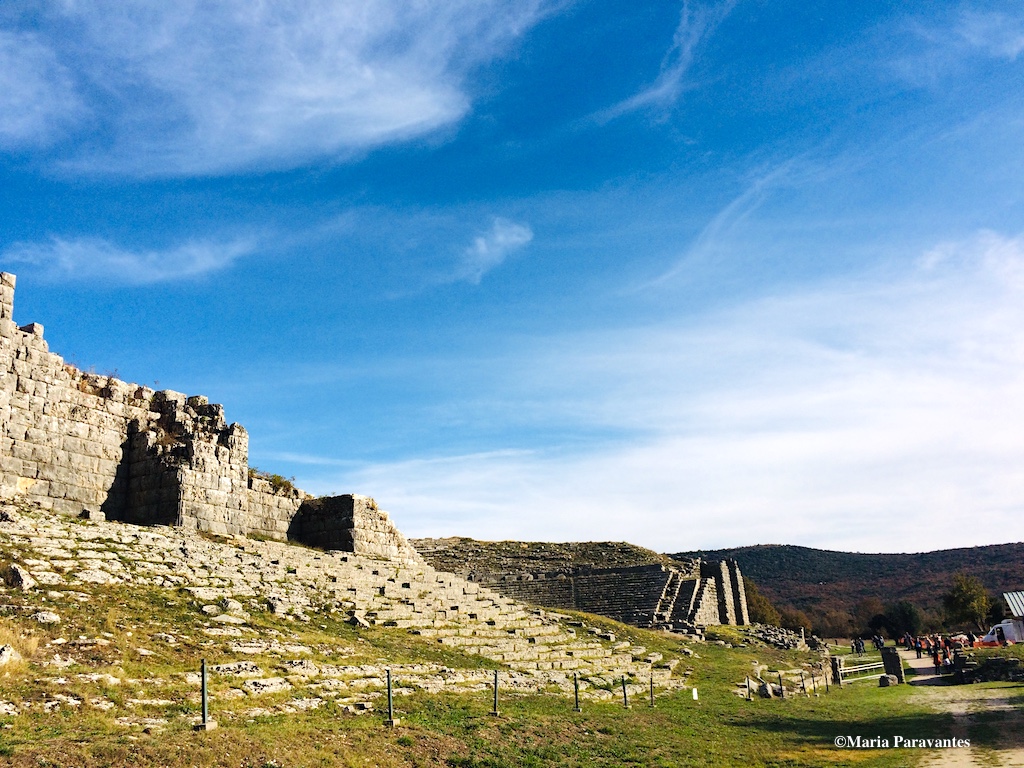
Very few people know that Epirus is home to five of the country’s greatest ancient theaters. These venues – the theaters of Dodoni, Nikopolis, Kassopi, Amvrakia, and Gitana, located in Ioannina, Arta, Preveza and Thesportia, had fallen silent for centuries but are now open to the public offering a glimpse of life in ancient Greece.
And you don’t have to be interested in archaeology to visit these theaters. They are so strategically located that you can combine a theater a day with a gastronomy tour, some sea and sun (Preveza or Parga), a sports adventure (Zagori villages), eco-awareness and activities (Amvrakikos Wetlands National Park), or even religious art tours (Arta).
👉🏼 Don’t have time to read the whole post? Start planning
You can start with the “Ancient Theaters of Epirus cultural route”, which I say is doorway to the full Epirus experience. Enough said, join me and let’s take a virtual tour of Epirus’ ancient wonders where some popular ‘ancients’ like Anthony and Cleopatra enjoyed the same views several thousand years ago!
►Ultimate Guide to Visiting Vergina: Macedonia’s First Capital
Ancient Theater of Dodoni
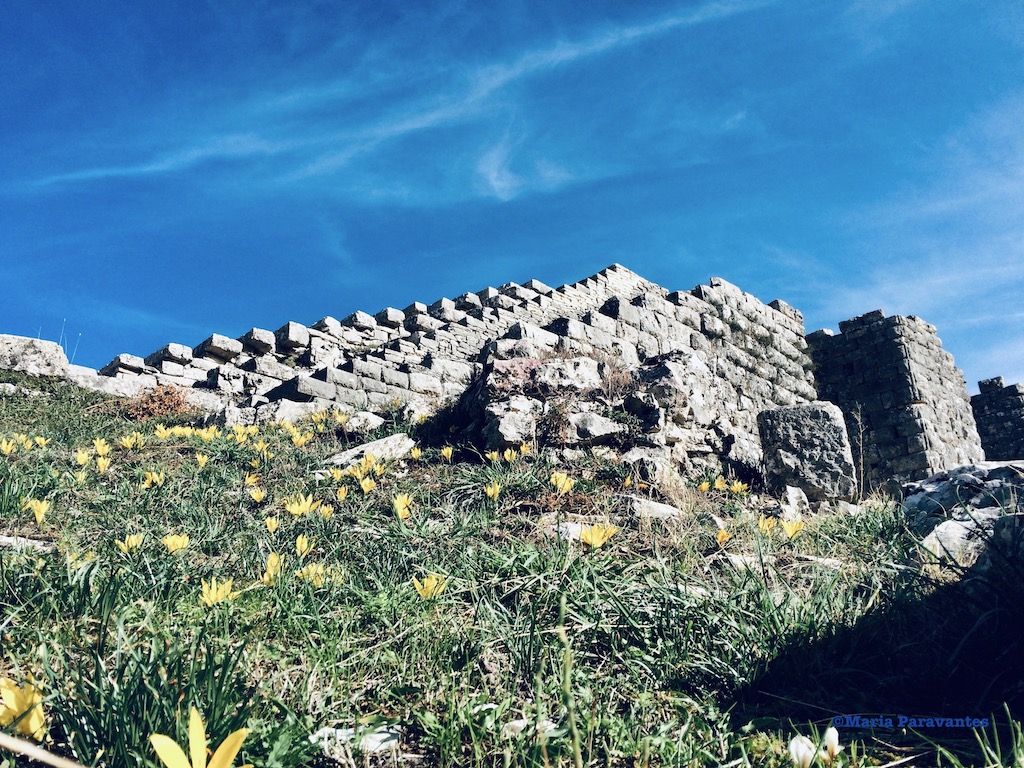
If there’s one thing that makes visiting Dodoni a must, it’s the energy you feel right when you set foot in the “land of rich meadows, and rich in flocks and shambling kine” as ancient poet Hesiod described it.
Dodoni dates back to the second millennium BC and was the home (on earth) of Greek god Zeus. It is also the oldest oracle in Greece considered second only in importance to that of Apollo at Delphi. According to scholars, Dodoni may have initially been an oracle of the Mother Goddess Rhea or Gaia.
The theater of Dodoni could host up to 17,500 people in its (ancient) heyday. It was constructed by King Pyrrhus who aspired for it to host massive events including poetry competitions in honor of Zeus. In Roman times however, the theater degenerated into an arena hosting wild animal fights. It wasn’t long before it fell silent.
Take a stroll, look around at the snow-capped mountains, sit under the ancient apple tree opposite the theater and let the energy heal you. Many of Greece’s ancient healing centers were located in Epirus.
TheGreekVibe.com trivia: The first emperor of France and one of the world’s brightest military leaders, Napoleon Bonaparte, never stopped until he got his way. This too happened in Epirus, where the French general fell in love with the warmth of the traditional Epirot cape, the “Syrrakiotiki Kapa”. So he just ordered dozens for his army. The wool capes were made by craftspeople from the villages of Syrrako and Kalarrytes near Arta.
►10 + 1 Perfect Places to Visit in Greece in Fall or Winter
Ancient Theater of Kassopi
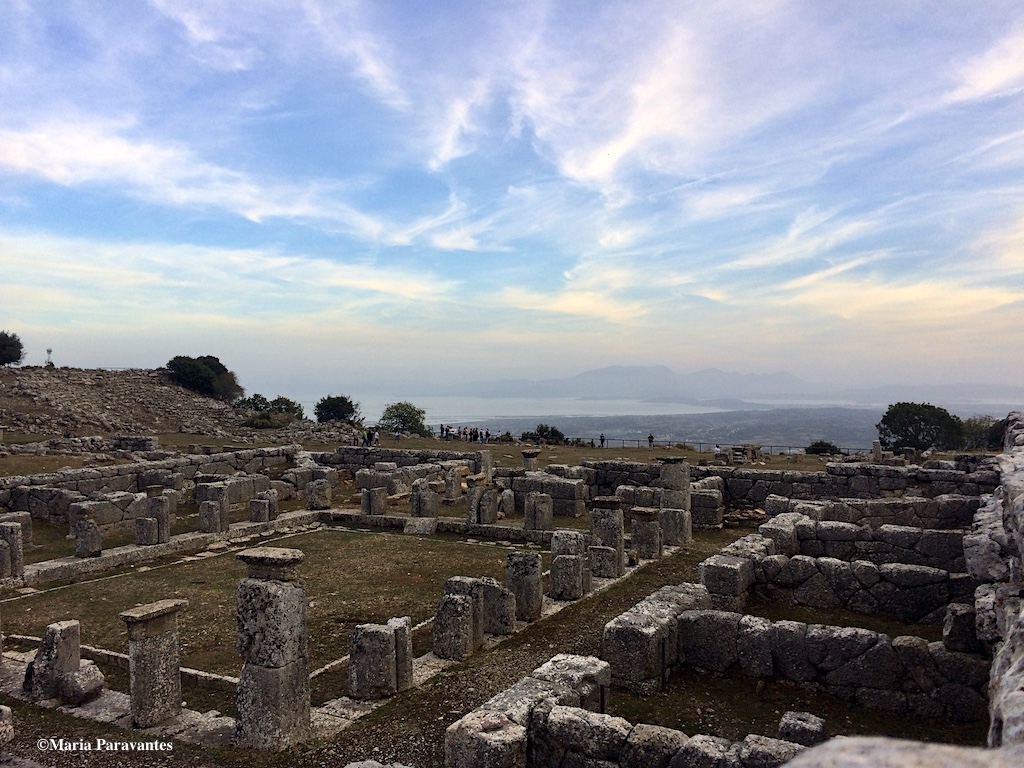
Constructed in the 3rd-century BC, this ancient, 6,000-seat theater remains intact with a spectacular view to the Amvrakikos Gulf, the Ionian Sea and the island of Lefkada. Built on a plateau beneath an acropolis, the city of Kassopi is a mini-Pompei with roads leading up to the theater, homes, the agora and public buildings perfectly preserved. You could say that Kassopi is also the best example of ancient Greek urban planning thanks to its “Hippodamian grid style” designed by Hippodamus of Miletus. The city was abandoned in the 1st century BC, when its inhabitants were forced to move to Nikopolis.
TheGreekVibe.com trivia: Two historic naval battles took place in the Bay of Preveza, the most famous being the clash between Octavian and historic duo Mark Antony and Cleopatra (yes, the one and only). The methods and strategies used in naval warfare today were inspired by those ancient battles.
►Discover Tsakonia: Where People Still Speak One of the World’s Oldest Languages
Ancient Theater of Nikopolis
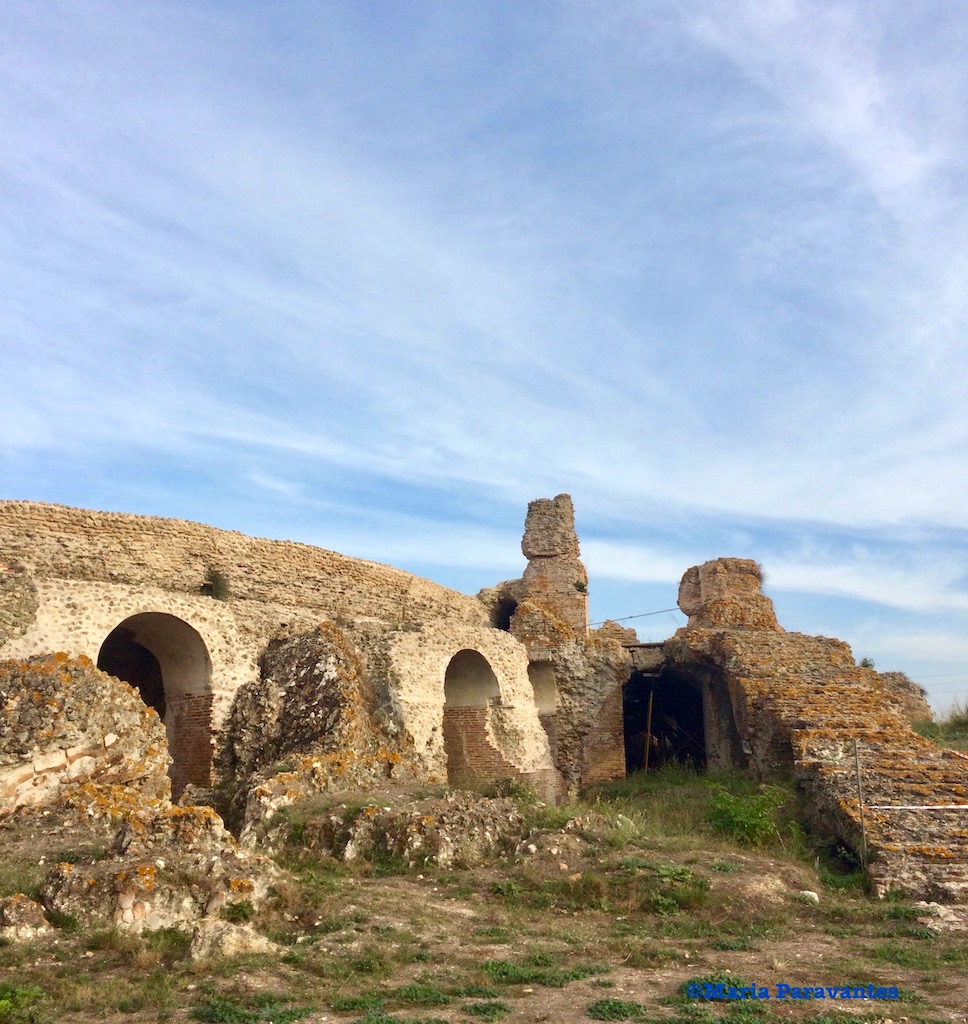
Looks like prehistoric Stonehenge but it’s not, it’s Nicopolis, the city of victory (Nike) founded in 29 BC by Caesar Augustus – also known as Octavian, the first emperor of the Roman Empire – after winning Mark Antony and Cleopatra at the naval Battle of Actium in the Amvrakikos Gulf.
In honor of the god Apollo, Octavian also revived the Actian Games and constructed a stadium, a gymnasium, two bathing areas, an odeon, and a theater to host athletic feats, contests, music and poetry events. The Theater of Nikopolis, constructed on a small bay of the Gulf of Arta near Preveza, was built in the 3rd century BC and hosted up to 5,000 spectators back then.
TheGreekVibe.com trivia: Remember tyrant Nero, Rome’s pyromaniac emperor said to have enjoyed watching Rome burn the ground? Well he competed and sang in a competition held in the ancient Theater of Nikopolis. He also won. Wouldn’t have it any other way. He was Nero after all.
►5 Ways to Get a Different More Rewarding Experience of Greece
Ancient Theater of Amvrakia
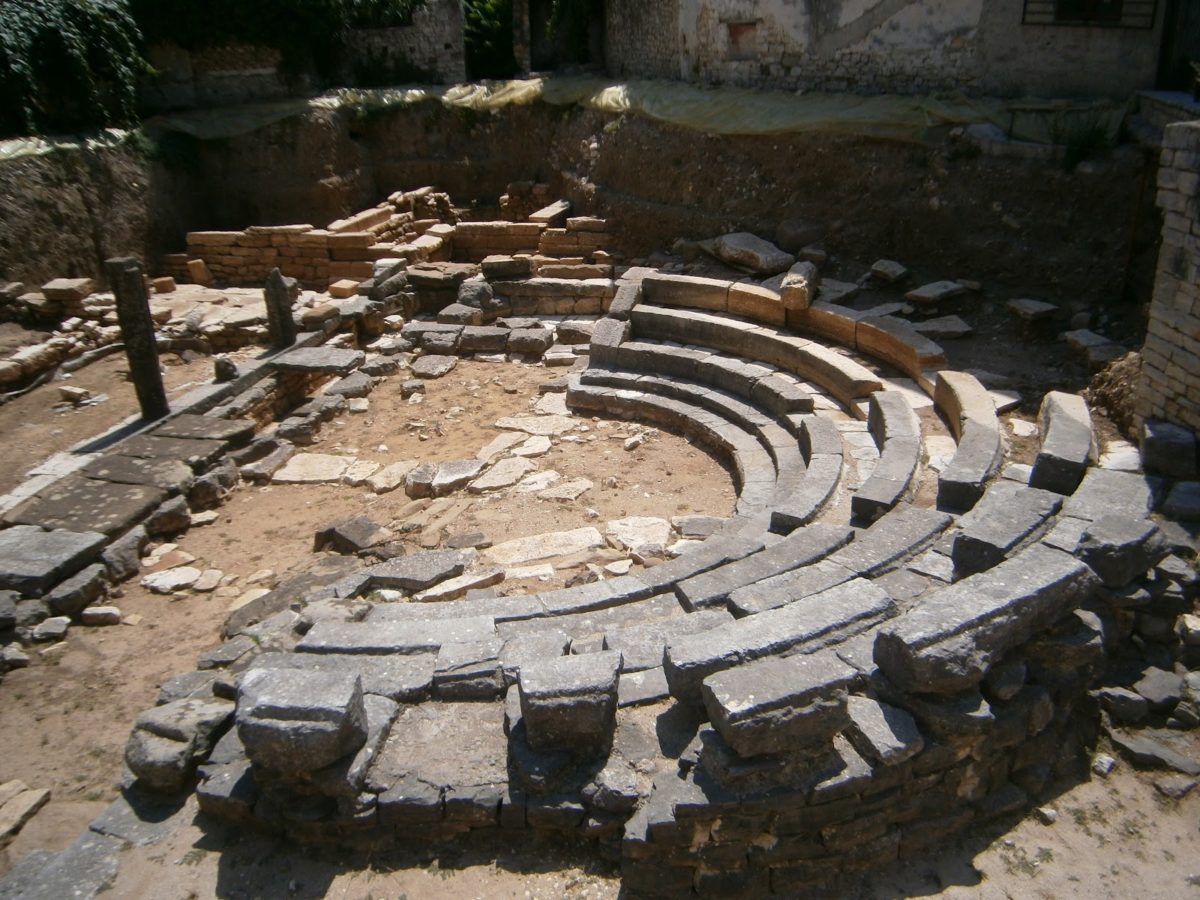
After moving his kingdom to Amvrakia, King Pyrrhus of Epirus decided to create a grand city fit for a king. To achieve his vision, in the heart of modern-day Arta, he set up a city, decorated it with exquisite art works and erected grandiose buildings, including two theaters. Only one of the two remains intact: the Ancient Theater of Amvrakia – the smallest theater ever discovered in Greece, together with the foundations of houses and baths dating back to the 5th-4th centuries BC. The tiny theater built in 318 BC was used as an assembly venue for administrative, political and religious matters.
TheGreekVibe.com trivia: King Pyrrhus of Epirus is considered one of the greatest military commanders of all time. The brilliant Greek leader and general ‘lent’ his name to a “victorious battle that has heavy losses” known today as “Pyrrhic Victory”.
👉🏼 Find the best hotel deals for you
►The Ancient Greeks & The Many Types of Love
Ancient Theater of Gitana
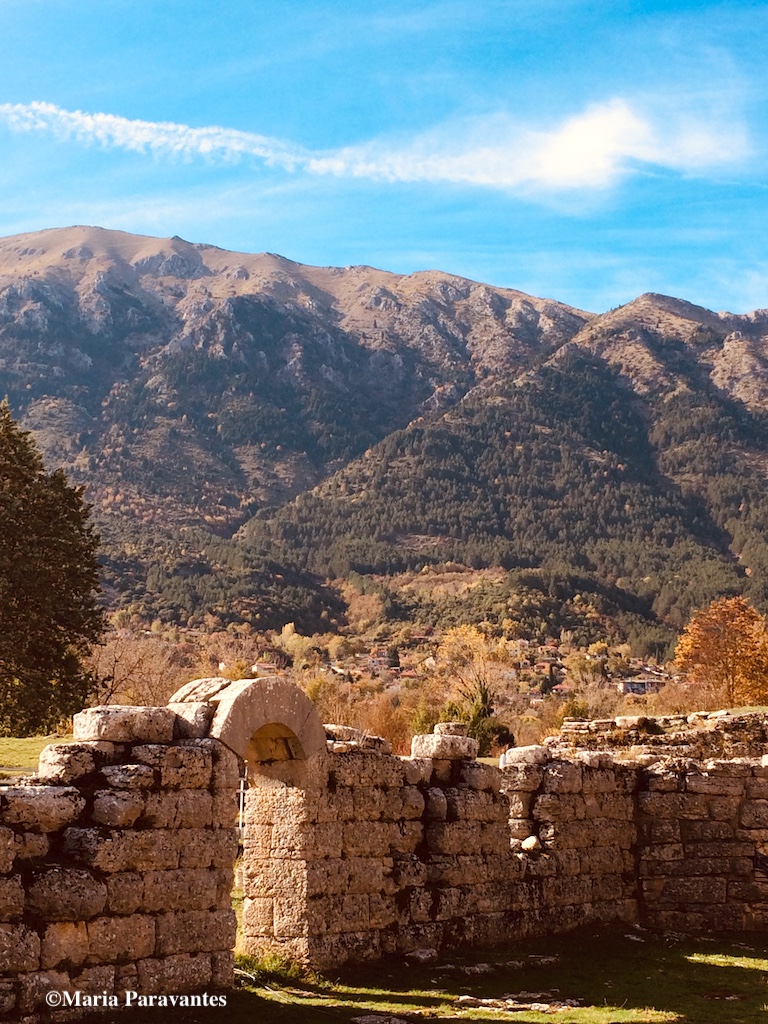
In the middle of what seems to be nowhere, along the Thyamis River you’ll come across a small theater of great importance. Besides hosting theatrical works and political assemblies, the ancient Theater of Gitana is one of the first venues in the world where you can see the names of slaves and of the people who set them free engraved in the marble of the seats. The theater, which went down in history for ‘showcasing’ equality and compassion, was built in Gitana, a 4th century BC defensive and commercial city and the capital of the Thesprotians, one of the three main tribes of Epirus. It too was designed by ancient Greek architect and urban planner Hippodamus of Miletus.
TheGreekVibe.com trivia: It is said that the ferocious Ali Pasha of Ioannina, the capital of Epirus, was so in love with his Greek wife that he had his 18th-century living room dressed with Gobelins Manufactory tapestries – the Paris-based factory supplying France’s monarchs, including ‘Sun King’ Louis XIV.
About the Epirus Theaters Cultural Route: Diazoma, an association made up of archaeologists, academics, artists and experts, is behind the idea of creating a route that would ‘use’ the ancient theaters of Epirus as a starting point for the exploration of the region with the ultimate aim to bring life, jobs and revenue to local communities through tourism. The association relies on crowdfunding and sponsorships to promote its various causes, which include discovering, sign-posting, preserving and restoring Greece’s cultural treasures and heritage.
The Greek Vibe Epirus Tips
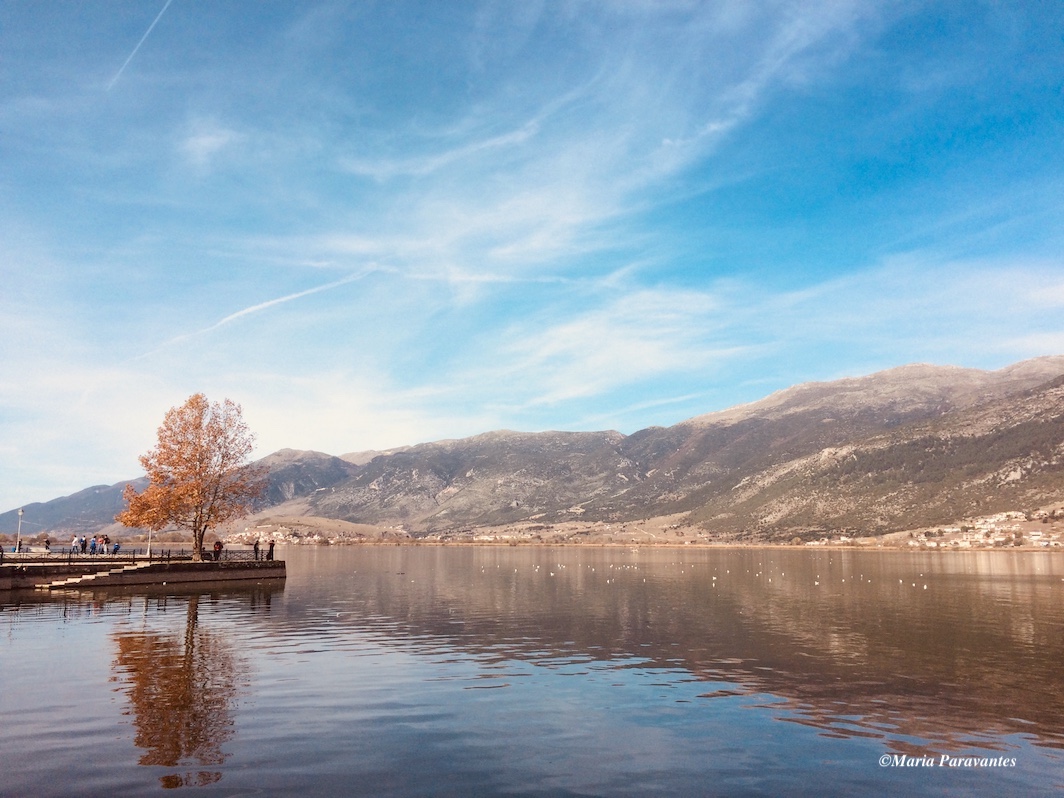
✓ On the road again… You can get to Epirus via flights to Aktion Airport or by road from Athens. The Ionia and Egnatia Odos highway have made it much easier to access the region.
✓ Indulge in… “blatsaria” (traditional savory cheese and greens pie), sausages, red wine (particularly from Metsovo), “gambari” shrimp from the Amvrakikos Gulf (on my last trip there I was told that US President Obama was served this shrimp when he visited Greece), Preveza sardines, locally-made spirit (tsipouro) Zambela, “klostari” baklavas (sweet) made with olive oil, and smoked eel.
✓ Don’t forget to buy… feta cheese – feta from Dodoni is one of the best-selling Greek products, wild mushrooms, traditional spoon sweets (“glyka tou koutaliou”), geremezi soft cheese, graviera Bafas cheese, herbs and wild tea, wines, “hilopites” and “trahanas” traditional Greek pasta.
✓ Truth or dare… Spend a day (at least) in and around Arta (Amvrakia in ancient times). It might seem like a mundane Greek town besides its legendary stone bridge, the “Gefyri tis Artas”, but there are plenty of surprises in store: the Amvrakikos Wetland National Park – one of Greece’s largest wetlands and national parks including the lagoons of Rodia, Logarou and Tsoukalio, all protected under the EU’s Natura program; the Necromanteion of Acheron (Oracle of the Dead) near Parga; the Kalamas-Acherontas valley; the Byzantine Church of Parigoritissa in Arta; and lastly the tiny islet of Koronisia, some 25km from Arta in the heart of wetlands where some 150 inhabitants still fish using the traditional “ivaria” fishing technique. Sit at the Patenda fish tavern and order a meze. You won’t regret it.
👉🏼 Dream of visiting Greece? Start planning
♫ And today’s post comes to a close with a traditional Epirotiko folk song: “Kaigomai kai Sigoliono” performed by Epirot singer Dimitris Yfantis about a burning heartache: “I’m burning and melting away for you,” he sings. Featuring here one of Epirus’ finest clarinetists: Petroloukas Halkias.
Be well! Travel!
Enjoyed this Post? Share and Pin it!
